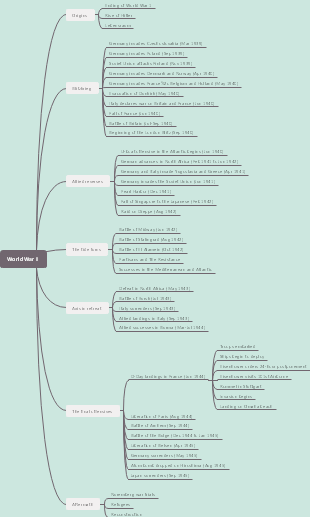MindMap Gallery Great Depression
Great Depression
This is a mind map that contains information about the great depression. Start to use a mind map to express and organize your ideas and knowledge right now.
Edited at 2020-10-08 08:06:39Great Depression
- Recommended to you
- Outline









